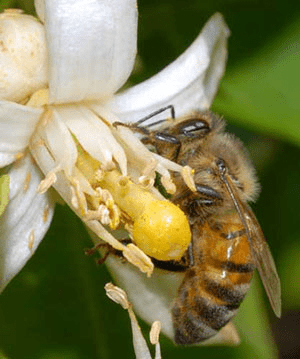Bees and Pesticides
The declining bee population is a growing problem.

Honey bees provide a critical service to agriculture, pollinating one-third of our food supply. Growers rely on these bees to pollinate their crops to produce the most abundant harvests. There are nearly 5,000 registered beekeepers in Florida managing a total of more than 620,000 honey bee colonies and producing between 10–20 million pounds of honey annually. But across the U.S., beekeepers are reporting losses of up to a million colonies of bees.
The use of pesticides is one of the growing concerns regarding the honey bee population. When foraging bees come into contact with these pesticides, those that aren’t killed immediately bring the contaminants back to the hive. In turn, the pesticides kill larvae and adult bees though contaminated pollen and nectar.
Taking careful precautions can benefit the health of pollinating bees. The first step is to use pesticides only when necessary. If you must use pesticides, take note of when the plant blooms. Bees are most active at this time, so spray before or after blooming. Avoid spraying between 8 a.m. and 5 p.m., when honey bees are usually foraging. And finally, try to use pesticides that are less toxic.
Gardeners need to be aware of fatal pesticide usage affecting the honey bee populations. When growers, gardeners and beekeepers are all aware of problems, they can easily take preventative measures to save the bee colonies. The ultimate goal is maximum plant and honey bee health and with a little knowledge, both can be achieved.
